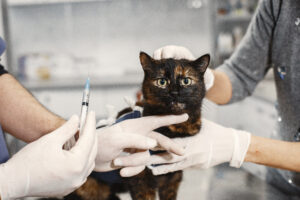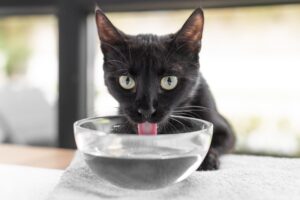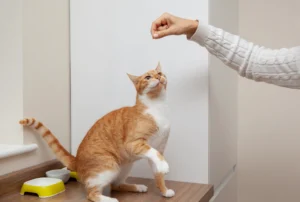Have you ever watched your feline friend and wondered: why do cats wag their tails? Unlike dogs, whose tail wagging usually signals happiness, cat tail movements tell a more complex story. As cat parents, understanding what your cat is trying to communicate through their tail can significantly improve your relationship and help you respond appropriately to their needs.
In this comprehensive guide, we’ll explore the fascinating world of cat tail language and reveal five truths about why cats wag their tails that many veterinarians don’t emphasize enough during routine visits. By the end of this article, you’ll be fluent in feline tail communication and better equipped to understand your furry companion’s emotional state.
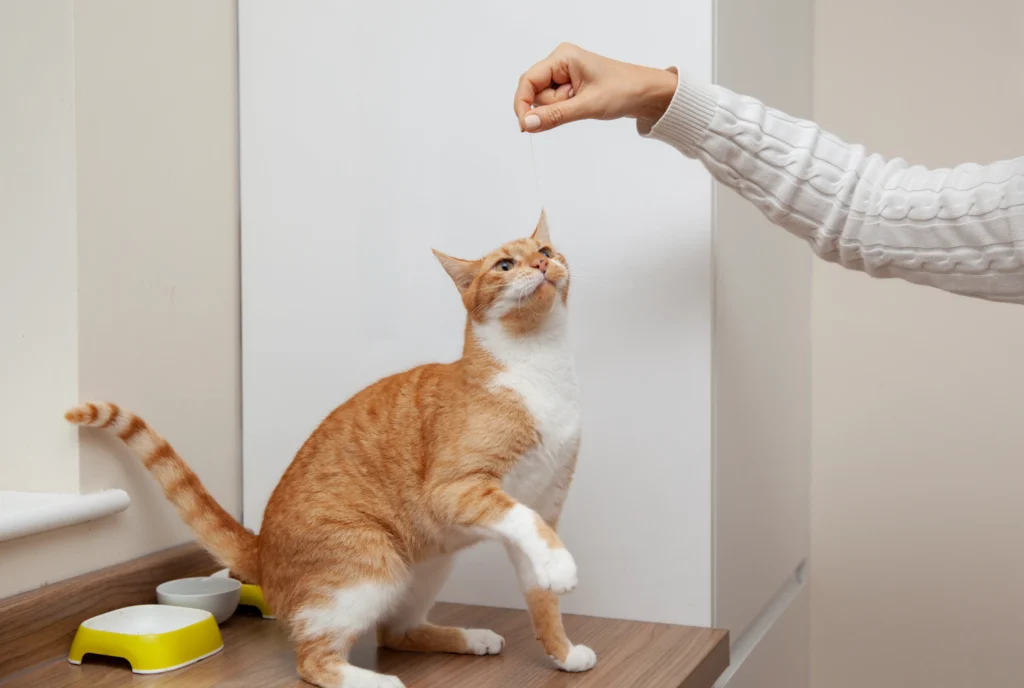
Table of Contents
- Understanding Basic Cat Tail Language
- The 5 Hidden Truths About Cat Tail Wagging
- Different Types of Cat Tail Movements Explained
- Why Do Cats Flick Their Tails When Lying Down?
- Cat Tail Positions and Their Meanings
- The Connection Between Purring and Tail Wagging
- Do Cats Wag Their Tails When Happy?
- When to Be Concerned About Your Cat’s Tail Behavior
- FAQs About Cat Tail Wagging
Understanding Basic Cat Tail Language
Why Do Cats Wag Their Tails
Before diving into the specifics, it’s important to understand that cat tail language is one of the most honest forms of feline communication. When considering why do cats wag their tails, remember that cats use their tails as emotional barometers, providing us with valuable insights into their feelings.
A cat’s tail is an extension of their spine, containing 19-23 vertebrae controlled by muscles that allow for precise movements. These movements aren’t random—they’re deliberate expressions of their emotional and physical state. Learning to interpret what cat tail movements mean is like learning a new language that can strengthen the bond between you and your feline companion.
Unlike verbal communication, which cats primarily reserve for humans, tail movements are an authentic part of their natural communication system. When you understand cat tail communication, you’re tapping into millions of years of evolutionary development.
The 5 Hidden Truths About Cat Tail Wagging
Truth #1: Tail Wagging in Cats Often Indicates Frustration or Conflict
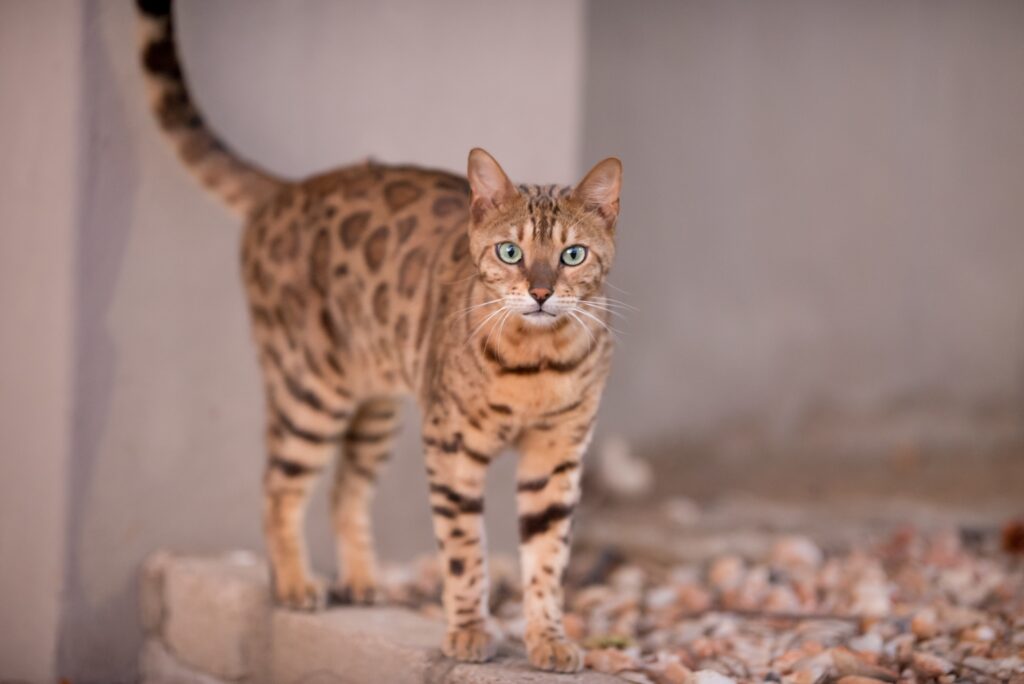
One of the most misunderstood aspects of cat tail behavior is that wagging, particularly a quick back-and-forth motion, rarely indicates happiness (unlike in dogs). When your cat displays this cat tail wagging meaning, they’re likely experiencing internal conflict or frustration.
For example, if your cat spots a bird outside the window that they can’t reach, you might notice vigorous cat tail flicking. This is a physical manifestation of their predatory instincts conflicting with their inability to act on them. Understanding this truth about why do cats wag their tails can help you identify situations causing your cat stress.
Truth #2: Slow Tail Movements Can Signal Predatory Focus
Why Do Cats Wag Their Tails
When cats are in hunting mode, they often exhibit slow, calculated cat tail movements explained by their need to maintain balance while focusing on prey. This subtle swaying differs from agitated wagging and indicates intense concentration.
If you’ve ever played with a laser pointer or wand toy with your cat, you might notice this slow, hypnotic tail movement just before they pounce. This is one aspect of why cats wag their tails that’s deeply connected to their evolutionary history as skilled hunters.
Truth #3: The Intensity of Tail Wagging Correlates With Emotional Intensity
The speed and amplitude of cat tail twitching directly correlates with how intensely they’re feeling an emotion. While many pet owners recognize extreme tail movements, they often miss the subtler signals.
Slight cat tail flicking might indicate mild interest or minor irritation, while violent thrashing suggests serious agitation or fear. Learning to gauge these intensity levels is crucial for understanding cat tail signs and responding appropriately to your pet’s needs.
Truth #4: Tail Position Is Just as Important as Movement
Why Do Cats Wag Their Tails
While we’re focusing on why do cats wag their tails, the position of the tail during the wagging provides essential context. A high tail that’s quivering at the tip communicates different emotions than a low, thrashing tail.
For instance, when your cat approaches you with their tail straight up and the tip slightly bent (often with a gentle quiver), they’re expressing genuine affection—one of the few cat tail emotions that’s universally positive. This nuance in cat tail position meanings is something many veterinarians don’t have time to explain during brief consultations.
Truth #5: Tail Wagging Can Indicate Physical Discomfort or Pain
Why Do Cats Wag Their Tails
Sometimes, why cats wag their tails when purring or during seemingly pleasant interactions might have nothing to do with their emotional state and everything to do with physical discomfort. Cats are masters at hiding pain, but their tails can betray them.
If your normally placid cat suddenly exhibits frequent cat tail twitching, especially when a particular area is touched or during specific movements, it might indicate pain or discomfort. This is especially true for older cats developing arthritis or cats with urinary tract issues, where cat tail flicking can be an important early warning sign.
Different Types of Cat Tail Movements Explained
Understanding the various types of cat tail movements explained in detail can significantly enhance your ability to communicate with your feline friend:
The Quick Flick or Twitch
A quick flicking motion at just the tail tip is one of the most common cat tail movements explained by feline behavior experts. This subtle movement often indicates mild irritation or growing impatience. If you’re petting your cat and notice this meaning of cat tail flicking, they might be reaching their stimulation limit.
Many cat owners make the mistake of continuing to pet their cats after observing this signal, potentially leading to scratching or biting. Learning to respect this aspect of cat tail communication can prevent unwanted aggressive incidents.
The Slow Swish
Why Do Cats Wag Their Tails
The slow, deliberate side-to-side swish differs significantly from agitated wagging. This movement is a classic example of why do cats wag their tails in a measured, controlled manner when they’re focused or slightly uncertain about something in their environment.
You might notice this behavior when your cat encounters a new object or is trying to decide whether to jump onto an unfamiliar surface. This cat tail behavior indicates analytical thinking and risk assessment—your cat is actively processing information and making decisions.
The Violent Thrash
When a cat’s tail moves rapidly and forcefully from side to side, almost whipping against their body or nearby surfaces, they’re communicating serious agitation or fear. This is one of the most misunderstood aspects of what does it mean when a cat wags its tail aggressively.
Many people mistake this for playfulness, but a violently thrashing tail is a warning sign that your cat is overstimulated and may lash out if approached. Understanding this cat tail wagging meaning can prevent injuries and help you provide your cat with space when they need it most.
The Tail Pump
Why Do Cats Wag Their Tails
Some cats exhibit a distinctive pumping motion—raising and lowering their tail while keeping it relatively straight. This motion, different from side-to-side wagging, is one of the cat tail emotions displayed during excitement, particularly before spraying behavior in unneutered cats.
Even neutered cats may exhibit this motion when highly stimulated by something in their environment. This cat tail behavior often precedes bursts of energy or “zoomies” around the house.
Why Do Cats Flick Their Tails When Lying Down?
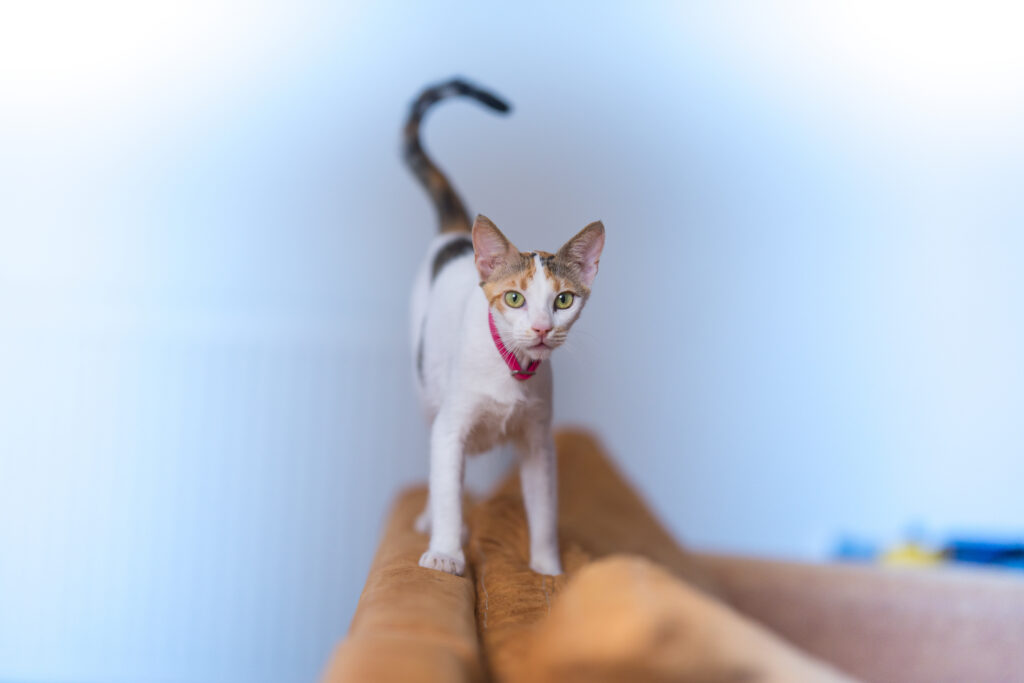
Why Do Cats Wag Their Tails
One of the most common questions cat owners ask is: why do cats flick their tails when lying down? This behavior can have several meanings depending on the context:
Relaxed Contentment
Why Do Cats Wag Their Tails
Sometimes, gentle cat tail twitching while lying down is simply a sign of relaxed contentment—similar to how humans might tap their fingers when listening to music. This subtle movement indicates your cat is comfortable but still somewhat alert to their surroundings.
If other body language signals—like half-closed eyes, relaxed ears, and a soft posture—accompany this gentle cat tail flicking, your cat is likely in a state of relaxed alertness.
Concentration During Rest
Why Do Cats Wag Their Tails
Cats are masters of the “cat nap”—resting while remaining partially alert to their environment. During these light sleep phases, cat tail movements explained by experts suggest that the flickering tail helps them maintain a minimal level of muscle tension and readiness.
This is why you might notice why do cats wag their tails even when they appear to be sleeping. They’re not fully unconscious but rather maintaining a state of readiness that allowed their wild ancestors to react quickly to threats or hunting opportunities.
Irritation While Resting
Why Do Cats Wag Their Tails
If your cat is trying to sleep but something is preventing them from fully relaxing—like household noise, another pet’s presence, or even pain—you might notice more pronounced cat tail twitching. This movement signals irritation or discomfort during what should be a peaceful moment.
The intensity of the movement often indicates the level of annoyance. Gentle cat tail flicking might suggest minor irritation, while more dramatic movements signal greater frustration. Understanding what does it mean when a cat wags its tail while resting can help you identify and address factors disturbing your cat’s peace.
Cat Tail Positions and Their Meanings
Beyond movement, the position itself carries significant meaning in cat tail language:
The High, Vertical Tail
When a cat walks with their tail held high, they’re displaying confidence and contentment. This position is one of the most positive cat tail signs and often indicates a happy, secure cat. You’ll commonly see this when your cat greets you after returning home.
If the tip of this vertical tail quivers slightly, it’s an expression of particularly intense happiness and affection—one of the few instances where why do cats wag their tails has a meaning similar to dogs’ tail wagging.
The Puffed Tail
A puffed-up tail (piloerection) is an involuntary reaction to fear or perceived threat. When asking what does it mean when a cat wags its tail while puffed up, the answer is almost always extreme agitation or fear. This cat tail behavior makes the cat appear larger to potential threats.
This position is often accompanied by arched backs, flattened ears, and possibly hissing or growling. Understanding this aspect of cat tail body language is crucial for recognizing when your cat feels threatened and needs space.
The Low or Tucked Tail
A tail held low or tucked between the legs indicates submission, insecurity, or fear. This cat tail position meanings contrasts sharply with the confident, high tail and suggests your cat feels vulnerable or anxious.
If you notice this behavior in response to specific situations or individuals, it’s important to identify and address the source of your cat’s discomfort. This understanding of why do cats wag their tails in a downward position can help you create a more secure environment for your pet.
The Question Mark Tail
Many cats hold their tails in a shape resembling a question mark—upright with a curl at the top. This distinctive position is one of the friendliest cat tail signs and indicates a confident cat in a playful, approachable mood.
When you see this position, your cat is likely feeling social and may be receptive to interaction. This is a positive aspect of cat tail communication that signals an opportunity for bonding.
The Connection Between Purring and Tail Wagging
Many cat owners notice that their cats sometimes purr and wag their tails simultaneously, leading to confusion about why cats wag their tails when purring. This combination of signals can be particularly puzzling since purring is generally associated with contentment while tail wagging often indicates agitation.
The Complexity of Purring
While most people associate purring exclusively with happiness, cats actually purr for various reasons, including self-soothing during stress or pain. Understanding this helps explain why do cats wag their tails sometimes while purring—they might be experiencing mixed emotions or using purring as a self-comforting mechanism while feeling agitated.
For example, some cats purr during veterinary examinations despite being stressed, as indicated by their cat tail twitching. The purring in this case represents a self-soothing behavior rather than contentment.
Overstimulation During Petting
One common scenario where you might notice why cats wag their tails when purring is during petting sessions. Your cat might genuinely enjoy your affection (hence the purring) but begin to become overstimulated after a period of time (indicated by increasing cat tail flicking).
This combination signals that while your cat appreciates the interaction, they’re approaching their stimulation threshold. Recognizing this early warning sign in cat tail language can prevent petting-induced aggression and help you respect your cat’s boundaries.
Do Cats Wag Their Tails When Happy?
The question “do cats wag their tails when happy?” has a nuanced answer that differs significantly from what we know about dogs. Unlike dogs, true happiness in cats rarely manifests as the broad, sweeping tail wags we associate with canine joy.
The Happy Quiver
When cats are genuinely happy, they might exhibit a slight quiver or vibration at the very tip of a vertically-held tail. This subtle movement differs dramatically from the broad sweeps that most people think of when asking why do cats wag their tails.
This quivering usually occurs during positive social interactions, particularly when a cat greets someone they’re fond of. Understanding this subtle aspect of cat tail signs helps distinguish between true feline happiness and other emotional states.
Playful Tail Movements
During play, cats often display a variety of cat tail movements explained by their need to maintain balance and express excitement. These movements might include gentle swaying or light tapping against surfaces.
While these movements occur during pleasurable activities, they’re more accurately described as expressions of excitement or hunting simulation rather than pure happiness. This understanding offers deeper insight into what cat tail movements mean in recreational contexts.
The Myth of the Happy Wag
One of the most common misconceptions—likely due to our familiarity with dogs—is that vigorous tail wagging in cats indicates happiness. In reality, when investigating why do cats wag their tails vigorously, we almost always find they’re expressing agitation, frustration, or conflict.
Education about this difference is essential for cat owners, as misinterpreting cat tail emotions can lead to interactions that increase rather than alleviate a cat’s stress.
Why Do Cats Thump Their Tails?
The distinctive thumping or slapping of a cat’s tail against a surface is a behavior that puzzles many cat owners. Understanding why do cats thump their tails provides important insights into their emotional state.
Escalating Irritation
When a cat deliberately thumps their tail against the floor, furniture, or even your leg, they’re expressing escalating irritation. This is a more pronounced version of cat tail flicking and serves as a clear warning that they’re becoming increasingly agitated.
This behavior is particularly common during petting sessions that have gone on too long. The rhythmic thumping is your cat’s way of communicating through cat tail language that they’re reaching their limit of tolerance.
Predatory Anticipation
In some hunting or play scenarios, cats will thump their tails just before pouncing. This cat tail behavior seems to help them establish rhythm and balance in preparation for the final attack.
You might notice this when your cat watches birds through a window or stalks a toy—the deliberate thumping often precedes explosive movement. This provides context for why do cats wag their tails in this distinctive manner during predatory sequences.
Pain Expression
Sometimes, cat tail twitching and thumping can indicate physical discomfort, particularly in the lower back, hips, or tail itself. If you notice unusual thumping behavior developing suddenly, especially in older cats or after injury, it might warrant veterinary attention.
This aspect of cat tail signs is often overlooked but can be an important indicator of health issues requiring intervention.
When to Be Concerned About Your Cat’s Tail Behavior
While most cat tail wagging meaning variations are normal parts of feline communication, certain changes in tail behavior might indicate health concerns:
Sudden Changes in Tail Carriage
If your normally confident cat with an upright tail suddenly begins carrying their tail low or if their usual cat tail movements explained by consistent patterns change dramatically, this could indicate pain or illness.
Cats instinctively hide weakness, but changes in how they carry or move their tails can be involuntary responses to discomfort. Understanding why do cats wag their tails differently than their norm is important for early problem detection.
Inability to Move the Tail
If your cat appears unable to move their tail normally or shows sensitivity when the tail is touched, this could indicate serious issues like tail pull injuries or nerve damage. Any dramatic change in cat tail behavior warrants prompt veterinary attention.
Excessive Grooming or Biting of the Tail
Sometimes, abnormal focus on the tail—including excessive grooming, biting, or chasing of the tail—can indicate medical problems like flea infestations, allergies, or even compulsive disorders. These behaviors go beyond normal cat tail communication and suggest discomfort that should be addressed.
Improving Your Relationship Through Understanding Cat Tail Language
Becoming fluent in cat tail body language can significantly improve your relationship with your feline companion:
Respecting Warning Signs
When you understand what does it mean when a cat wags its tail in an agitated manner, you can respect their communication by giving them space. This prevents negative interactions and builds trust by showing your cat that you respect their boundaries.
Creating Safety and Security
By recognizing cat tail signs of fear or insecurity, you can take steps to make your cat feel safer—whether by removing stressors, providing hiding spots, or using calming pheromone products. This proactive approach based on cat tail emotions demonstrates care for your cat’s emotional wellbeing.
Identifying the Perfect Petting Sessions
Learning to read cat tail communication helps you identify the optimal duration for physical affection. By stopping before cat tail twitching begins, you can ensure interactions remain positive and end on a high note.
Early Detection of Health Issues
Subtle changes in why do cats wag their tails or how they carry their tails can sometimes be the first indication of health problems. Cat owners who are attentive to these details often detect issues earlier, leading to better treatment outcomes.
FAQs About Cat Tail Wagging
Why does my cat’s tail puff up like a bottle brush?
When your cat’s tail puffs up dramatically, they’re experiencing fear or feeling threatened. This involuntary piloerection is part of cat tail body language designed to make them appear larger to potential threats. It’s an important defensive mechanism and a clear sign your cat needs space and security.
Why do cats wag their tails while lying down and purring?
This combination often indicates mixed emotions. Your cat might be enjoying your company (purring) but starting to feel overstimulated (cat tail flicking). This is a nuanced aspect of why do cats wag their tails that suggests they’re reaching their affection threshold.
Do cats wag their tails in their sleep?
Cats experiencing REM sleep may exhibit small cat tail twitching movements as their brains process information and dreams. These involuntary movements differ from conscious cat tail wagging meaning and are normally brief and sporadic.
Why does my cat flick just the tip of its tail?
The subtle flicking of just the tail tip is typically the first and mildest warning sign of irritation or overstimulation. This early signal in cat tail language is easily missed but critically important for preventing escalation to more aggressive behaviors.
What does a rapidly twitching tail mean in cats?
A rapidly twitching or vibrating tail, particularly when held high, often indicates intense excitement or anticipation. This specific cat tail behavior commonly occurs when cats greet beloved humans or anticipate food or play.
Conclusion
Understanding why do cats wag their tails is much more complex than many people realize. Unlike dogs, whose tail wagging broadly indicates happiness, cats use tail movements as a sophisticated communication system expressing everything from mild irritation to intense fear or affection.
By learning to interpret the subtle variations in cat tail language—including position, movement style, speed, and accompanying body language—you can develop a deeper understanding of your feline companion’s emotional state and needs. This knowledge strengthens your bond and helps create a more harmonious relationship.
The next time you observe your cat’s tail in motion, remember that they’re actively communicating with you through this expressive appendage. By responding appropriately to these signals, you demonstrate respect for their feelings and boundaries, building a foundation of trust that enhances your relationship.
For more information about cat behavior and care, explore our other helpful resources at PetsPump and learn how to become the best cat parent possible.
References:
- American Association of Feline Practitioners. (2022). Feline Behavior Guidelines.
- Bradshaw, J. (2019). Cat Sense: How the New Feline Science Can Make You a Better Friend to Your Pet. Basic Books.
- International Cat Care. (2023). Understanding Feline Communication. www.icatcare.org
- Journal of Veterinary Behavior. (2021). Tail Posture and Motion as Indicators of Emotional State in Domestic Cats.
- Turner, D.C., & Bateson, P. (2023). The Domestic Cat: The Biology of its Behaviour. Cambridge University Press.
Disclaimer: While this article provides general information about cat behavior, individual cats may have unique communication styles. If you’re concerned about your cat’s behavior or health, please consult with a qualified veterinarian or animal behaviorist.



